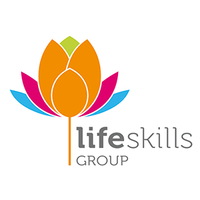Measuring wellbeing is tricky. As with anything we want to measure the first thing we need to be clear on is what do we mean when we say ‘wellbeing’. The World Health Organisation defines wellbeing as “a positive state experienced by individuals and societies. Similar to health, it is a resource for daily life and is determined by social, economic and environmental factors.”
This definition doesn’t sit consistently with what I mean when I say wellbeing in an education setting. However, interestingly the World Health Organisation definition of mental health is nearly exactly what I think of when I frame wellbeing in education. They frame mental health as “the capacity of thought, emotion, and behaviour that enables every individual to realise their own potential in relation to their developmental stage, to cope with the normal stresses of life, to study or work productively and fruitfully, and to contribute to their community.”
So, when I’m measuring wellbeing, am I really measuring mental health? And if so, why don’t I call it that? As with all (most) evaluative endeavours, if we don’t have clarity on exactly what it is we are measuring then we are on a slippery slope to begin with.
Fortunately, in many education jurisdictions, we have a common definition of wellbeing established. The things that contemporary literature is championing are themes like ‘caring for students’, ‘differentiating to meet students at their point of need’, and ‘a sense of belonging’. Unfortunately, what we often see as improvement measures for these themes are attendance targets, behaviour targets and changes in annual student surveys. These targets don’t measure these themes.
What this results in is often school plans that feel disjointed. The activities we do are based on our values and definition of wellbeing and don’t necessarily align with the targets we are set. For example, if a school is running a program on sportsmanship, resilience or perseverance and it is incredibly successful it still won’t show up in attendance, behaviour, or annual student survey data. So, what do we do in that case? The evidence (change in attendance data, behaviour data, annual survey) hasn’t changed therefore our evidence-based decision making suggests we should stop doing these programs because they aren’t working. Clearly, we need to align the activities we do, the outcomes we are trying to achieve and the tools we are using to measure success.
In the current economic climate in schools, we are often looking to de-implement and just get back to the priorities, the things that matter. Well, if ‘the capacity of thought, emotion and behaviour that enables every individual to realise their own potential in relation to their development stage, to cope with the normal stresses of life, to study or work productively and fruitfully, and to contribute to their community.” matters to you then we need to think about how we measure it, otherwise we will be left focusing on work that hits the target but misses the point.
6 questions you can ask of your school wellbeing plan:
-
If the activities in our plan went perfectly and had the impact we want them to, would they be visible in our improvement measures?
-
Does our definition of wellbeing align with the activities we are doing and the outcomes we are expecting to achieve?
-
Is there anything in our school that we do that contributes to wellbeing and is not in our plan?
-
Is there anything in our wellbeing plan that doesn’t have a way to be measured?
-
Is there anything left out of the plan that is important, but was left out because it is too hard to measure?
-
How is student voice expressed in your plan? Is it well represented, relevant and reliable?
Measuring wellbeing is tricky, if you would like support measuring the things that matter, please reach out to us for a free trial of Life Skills GO at your school.
[ Rydr Tracy is the Head of Education at Life Skills Group and former Director Strategic Priorities at CESE. He is a specialist in evidence-informed practice in educational innovation, with a career focus on strategic change that improves student outcomes. He draws on a rare blend of successful experience in schools, system leadership roles and industry practice – experience that has given him deep understanding of the complexities of the education sector from the classroom to the boardroom and a demonstrated capacity to generate practical recommendations that are grounded in context and evidence. ]
.png?width=500&height=374&name=Logo_transparent%20(2).png)





